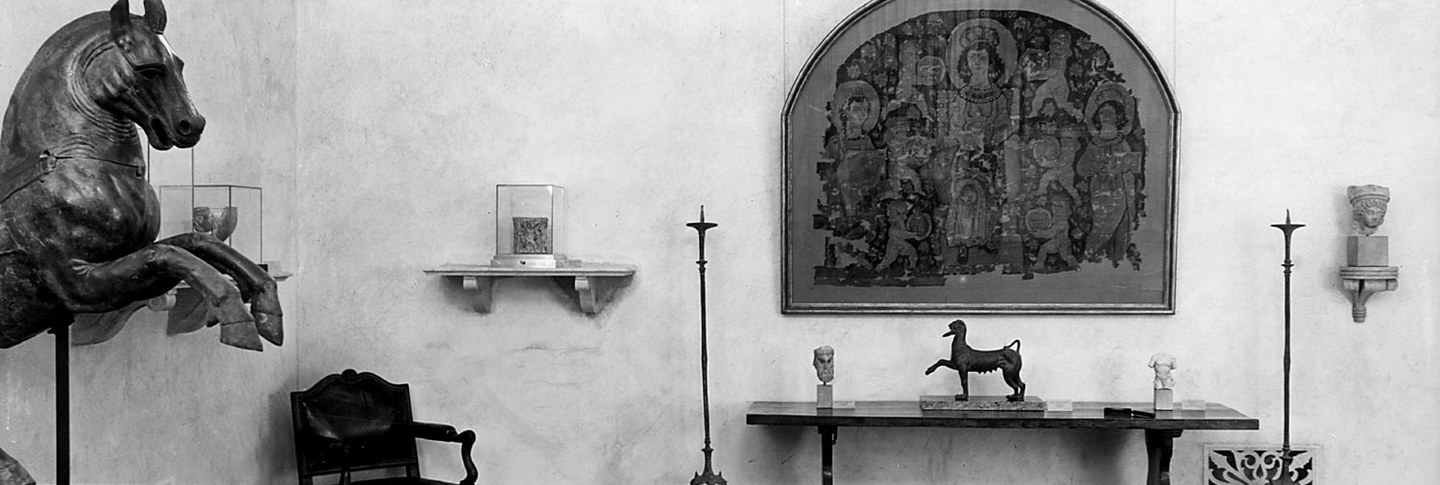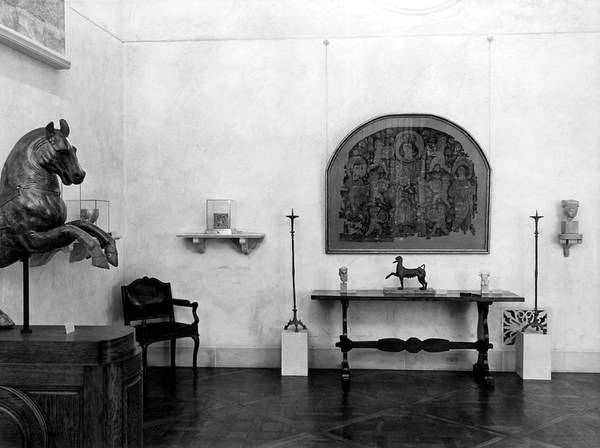Byzantine Collection, December 15, 1940.
The Dumbarton Oaks Research Library and Collection opened a little more than a year after the outbreak of the Second World War. Indeed, its founder, Robert Woods Bliss, later recounted that the war’s beginning and the opening of the institution were more than coincidental:
As the depression increased and Nazism gained control of Germany, we knew war was a certainty and that inevitably this country would be sucked into the cataclysm. So we faced the future squarely and decided to transfer Dumbarton Oaks to the University in 1940. To ease the wrench, we assured each other that freedom of choice is a privilege not often granted by Fate and that to give up our home at our own time to assure the long range realization of our plan was the way of wisdom.

At first, the war seemed to have little impact on the embryonic institution. However, with the Japanese bombing of Pearl Harbor on December 7, 1941, and America’s entry into the conflict, Dumbarton Oaks quickly shifted from the academic to the pragmatic. Dumbarton Oaks, in effect, reacted to and then joined the war effort: the collection was quickly packed and sent to various distant locations for safekeeping until the end of the war in 1945; use of the property was offered to relief organizations and then to the Departments of War and State, first to expedite the war effort and then to facilitate the establishment of world peace; a victory garden was maintained; and Dumbarton Oaks fellows provided the War Department with lists of potentially endangered sites, monuments, and artworks in Hungary, Bulgaria, Germany, Greece, Yugoslavia, Romania, and Tunisia in order to help insure their protection. These activities notwithstanding, throughout the war years the Blisses also continued to collect art in order to further improve the Byzantine collection that they had given to Harvard University.
On December 7, 1941, the Dumbarton Oaks staff began to pack the Collection’s artworks and antiquities in order to store them at various locations across the country, including a basement vault that was constructed at Dumbarton Oaks. Some objects went to other museum storerooms, and the “most precious objects” were deposited in the vault of the City Bank-Farmers Trust Company in New York City. Having seen wartime destruction firsthand while living in France during the First World War, the Blisses asked Dumbarton Oaks to make this preemptive move to protect artworks in case there was a military attack on Washington. Mildred Bliss was particularly anxious. On January 16, 1942, she wrote to director John Thacher, “I hope you are getting on with the protection of the vault in the new building, for I have a feeling that the raiding season will come sooner than expected.” She continued:
It is also of vital importance to the future of Dumbarton Oaks and consequently to that of the University itself that nothing harmful to the best interests of the plant life should be done unless the war makes it necessary by making their continued care impossible. But nothing short of impossible would justify it to us.
After the establishment of peace in 1945, 120 Dumbarton Oaks artworks that had been stored at Harvard’s Fogg Art Museum were shown there between November 15 and December 31 in an exhibition titled “A Selection of Ivories, Bronzes, Metalwork and Other Objects from the Dumbarton Oaks Collection.” Upon their return to Dumbarton Oaks, the collection was reinstalled and opened once again to the public in the fall of 1946.

